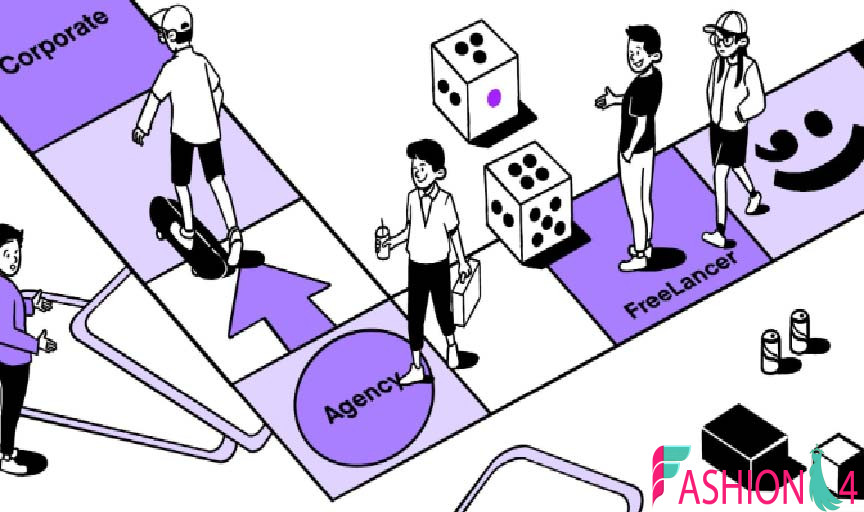
What is Graphic Design?
Graphic design is the art and practice of planning and projecting ideas and experiences through visual content. It can take many forms, from print media to digital products, and is widely used in marketing, branding, and web development. Graphic designers combine typography, color theory, imagery, and layout to create visually appealing materials that communicate messages effectively.
As industries evolve, graphic design remains in high demand, offering various career opportunities across multiple sectors. Whether you’re new to the field or looking to advance your career, understanding the essentials of graphic design can help you land your dream job.
Essential Skills for Graphic Designers
To succeed in graphic design, professionals must have a blend of technical skills, creativity, and soft skills. Employers are typically looking for candidates who demonstrate proficiency in the following areas:
1. Software Proficiency
Today’s graphic design jobs require expertise in design software. The most commonly used tools include:
- Adobe Creative Suite: Photoshop, Illustrator, and InDesign are staples for most designers. Mastering these tools is critical for creating professional-quality designs.
- Figma & Sketch: These are essential for UI/UX designers, as they allow for wireframing and prototyping, making it easier to collaborate with developers.
- CorelDRAW: A powerful vector design tool, especially popular in some print industries.
2. Typography
Understanding how to arrange type is a key aspect of graphic design. Typography affects readability, mood, and the overall aesthetics of a project. Knowing how to pair fonts, manage kerning and leading, and ensure proper font hierarchy is essential.
3. Color Theory
Graphic designers must have a firm grasp of color theory, including how different colors interact and the emotional responses they evoke. A strong command of color can enhance the visual impact of a design.
4. Creativity and Originality
Creativity is the cornerstone of any design role. Employers look for designers who can think outside the box and bring fresh, original ideas to the table. Staying updated on current design trends while maintaining a unique style is a crucial balancing act.
5. Communication Skills
Graphic designers often work as part of a team, collaborating with clients, marketers, and developers. Clear communication is essential to ensure that design concepts align with project goals. Being able to articulate your ideas, accept constructive feedback, and adjust your designs accordingly is a key soft skill.
6. Time Management
Many graphic designers juggle multiple projects simultaneously. Strong time management skills are necessary to meet deadlines and deliver high-quality work. Developing an efficient workflow and staying organized is critical for success in this fast-paced industry.
Different Career Paths in Graphic Design
Graphic design encompasses a broad spectrum of specializations. Depending on your interests and skills, you can pursue various career paths in the field:

1. UI/UX Design
User Interface (UI) and User Experience (UX) design focus on creating intuitive and aesthetically pleasing interfaces for digital products. UI/UX designers often work with wireframes and prototypes, ensuring the functionality and visual appeal of websites and mobile apps.
2. Branding and Identity Design
Branding designers create visual assets that represent a company or product, including logos, business cards, packaging, and marketing materials. The goal is to develop a cohesive visual identity that communicates the brand’s values and resonates with the target audience.
3. Print Design
Print designers specialize in creating materials such as brochures, posters, business cards, and product packaging. Although digital media has grown in importance, print design remains a vital area, especially in industries like advertising and retail.
4. Web Design
Web designers are responsible for creating the look and feel of websites. This role requires a combination of graphic design skills and an understanding of HTML/CSS to ensure websites are both visually appealing and functional.
5. Motion Graphics and Animation
Motion graphics designers create animated visuals for television, movies, video games, and digital platforms. This specialization often involves skills in video editing and 3D design, making it one of the more technically demanding areas of graphic design.
How to Get a Graphic Design Job
Landing a graphic design job involves more than just having the right skills. You need a strategic approach to stand out in a competitive market. Here are some steps to help you secure a position:
1. Build a Strong Portfolio
Your portfolio is your calling card in the design world. It showcases your skills, creativity, and experience. Include a variety of projects that demonstrate your range and expertise. Highlight your best work, but also show your ability to adapt to different styles and client needs.
2. Network in the Design Community
Building relationships within the design community can open doors to new opportunities. Attend industry events, join online forums, and follow design influencers on social media platforms like LinkedIn and Instagram. Networking can help you learn about job openings, gain industry insights, and potentially land freelance gigs.
3. Tailor Your Resume and Cover Letter
Customize your resume and cover letter for each job application. Focus on relevant experience and skills that match the job description. Be sure to include links to your online portfolio or website so potential employers can easily view your work.
4. Freelance and Gain Experience
If you’re just starting, freelancing is a great way to build your portfolio and gain real-world experience. Websites like Upwork, Fiverr, and Behance allow you to showcase your work and connect with clients looking for design services.
5. Keep Learning and Stay Updated
The design industry is constantly evolving, with new trends and technologies emerging regularly. Stay updated by taking online courses, attending workshops, or reading industry blogs. Continuous learning demonstrates your commitment to growth and keeps your skills relevant.
Top Industries Hiring Graphic Designers
Graphic design is a versatile field with opportunities across many sectors. Here are some of the top industries where graphic designers are in high demand:
- Marketing & Advertising: Graphic designers play a crucial role in creating visual content for advertisements, social media, and marketing campaigns.
- Technology: Tech companies often hire UI/UX designers to develop intuitive interfaces for apps, websites, and software products.
- E-commerce: Graphic designers help e-commerce companies create eye-catching product images, banners, and promotional materials.
- Entertainment: The entertainment industry, including film, television, and gaming, requires designers for motion graphics, posters, and promotional content.
- Retail: Many retail brands hire designers to work on packaging, branding, and in-store marketing materials.
Conclusion: Your Next Steps
Graphic design is a dynamic and rewarding career that offers endless possibilities for creative professionals. Whether you’re looking to specialize in UI/UX, branding, or motion graphics, there are numerous paths to explore. By mastering the essential skills, building a strong portfolio, and staying connected with the design community, you can land your dream graphic design job.
For More More Visit, Fashion4

